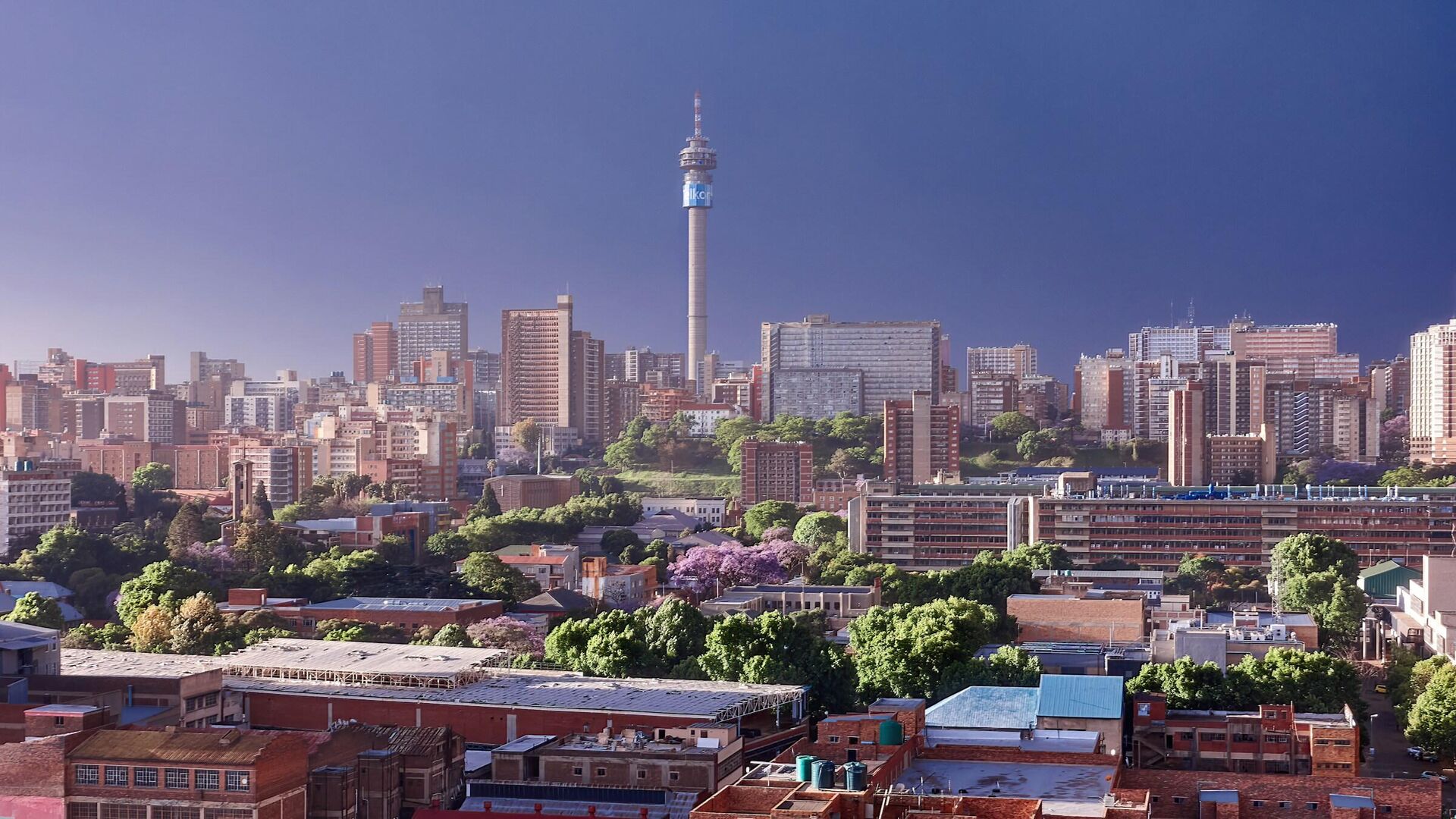https://en.sputniknews.africa/20240823/africas-urban-future-rapid-growth-and-challenges-ahead-1067982023.html
Africa's Urban Future: Rapid Growth and Challenges Ahead
Africa's Urban Future: Rapid Growth and Challenges Ahead
Sputnik Africa
As Africa’s cities expand at an unprecedented rate, the continent faces a dual challenge: harnessing the economic potential of this growth while addressing the... 23.08.2024, Sputnik Africa
2024-08-23T16:35+0200
2024-08-23T16:35+0200
2024-08-23T16:42+0200
dar es salaam
cairo
lagos
urbanization
united nations (un)
population
population growth
nigeria
south africa
egypt
https://cdn1.img.sputniknews.africa/img/07e8/07/07/1067407565_0:0:2401:1350_1920x0_80_0_0_228457f6f04754462c143fc9ee048510.jpg
Africa is on track to become the world’s fastest urbanizing region, with six cities projected to have populations exceeding 10 million by 2035, according to a report by the Economist Intelligence Unit (EIU).This rapid urban expansion will see Angola’s capital, Luanda, and Tanzania’s commercial hub, Dar es Salaam, join the ranks of Cairo, Kinshasa, Lagos, and Greater Johannesburg as megacities.The EIU report highlighted that by 2035, more than half of Africa’s population will live in urban areas, up from about 650 million people in 2023. This shift is expected to create significant economic opportunities, generate wealth, and foster dynamism across the continent.However, it will also pose substantial challenges for city planners.The urban population is forecast to reach nearly 1 billion by 2035, with East Africa expected to lead this growth, followed by Central and West Africa.In addition to the six megacities, Africa is anticipated to have 17 urban areas with populations exceeding 5 million and around 100 cities with over 1 million residents. Among these, Addis Ababa is expected to experience the fastest growth, with an average annual rate of 10.6%, followed closely by Kampala, Dar es Salaam, and Abidjan, each growing at rates near or above 9%.The report also identified emerging megalopolises, including a 600-kilometer stretch along West Africa’s coast from Abidjan in Cote d'Ivoire to Lagos in Nigeria. This corridor could become one of the world’s largest urban areas, with more than 50 million people by 2035. Other potential megalopolises are centered around Cairo and Alexandria in Egypt, Johannesburg, and Pretoria in South Africa, a “Great Lakes city hub” encompassing Nairobi in Kenya and Kampala in Uganda, and urban clusters in Morocco and Algeria.The UN predicts that Africa's population will nearly double to 2.2 billion within the next 30 years, with approximately 70% of the population being under 30 years old.
https://en.sputniknews.africa/20240802/south-africas-population-exceeds-63-million-growing-by-more-than-835500-people-in-one-year-1067714447.html
dar es salaam
cairo
lagos
nigeria
south africa
egypt
pretoria
johannesburg
north africa
west africa
ethiopia
addis ababa
east africa
democratic republic of the congo (drc)
central africa
angola
tanzania
Sputnik Africa
feedback@sputniknews.com
+74956456601
MIA „Rossiya Segodnya“
2024
Christina Glazkova
https://cdn1.img.sputniknews.africa/img/07e7/0b/07/1063380906_0:0:673:674_100x100_80_0_0_79628b4d0cd9f29291a57aa13bbf9e7a.jpg
Christina Glazkova
https://cdn1.img.sputniknews.africa/img/07e7/0b/07/1063380906_0:0:673:674_100x100_80_0_0_79628b4d0cd9f29291a57aa13bbf9e7a.jpg
News
en_EN
Sputnik Africa
feedback@sputniknews.com
+74956456601
MIA „Rossiya Segodnya“
Sputnik Africa
feedback@sputniknews.com
+74956456601
MIA „Rossiya Segodnya“
Christina Glazkova
https://cdn1.img.sputniknews.africa/img/07e7/0b/07/1063380906_0:0:673:674_100x100_80_0_0_79628b4d0cd9f29291a57aa13bbf9e7a.jpg
dar es salaam, cairo, lagos, urbanization , united nations (un), population, population growth, nigeria, south africa, egypt, pretoria, johannesburg, north africa, west africa, ethiopia, addis ababa, east africa, democratic republic of the congo (drc), central africa, angola, tanzania
dar es salaam, cairo, lagos, urbanization , united nations (un), population, population growth, nigeria, south africa, egypt, pretoria, johannesburg, north africa, west africa, ethiopia, addis ababa, east africa, democratic republic of the congo (drc), central africa, angola, tanzania
Africa's Urban Future: Rapid Growth and Challenges Ahead
16:35 23.08.2024 (Updated: 16:42 23.08.2024) Christina Glazkova
Writer / Editor
As Africa’s cities expand at an unprecedented rate, the continent faces a dual challenge: harnessing the economic potential of this growth while addressing the socio-economic and environmental issues that accompany it.
Africa is on track to become the world’s fastest urbanizing region, with six cities projected to have populations exceeding 10 million by 2035, according to a
report by the Economist Intelligence Unit (EIU).
This rapid urban expansion will see
Angola’s capital, Luanda, and Tanzania’s commercial hub, Dar es Salaam, join the ranks of Cairo, Kinshasa, Lagos, and Greater Johannesburg as megacities.
The EIU report highlighted that
by 2035, more than half of Africa’s population will live in urban areas, up from about 650 million people in 2023. This shift is expected to create significant economic opportunities, generate wealth, and foster dynamism across the continent.
However, it will also pose substantial challenges for city planners.
“Overcrowding, informal settlements, high unemployment, poor public services, stretched utility services, and exposure to climate change are just some of the major challenges that city planners will have to grapple with,” it read.
The urban population is forecast to reach nearly 1 billion by 2035, with
East Africa expected to lead this growth, followed by Central and West Africa.
In addition to the six megacities, Africa is anticipated to have 17 urban areas with populations exceeding 5 million and around 100 cities with over 1 million residents. Among these,
Addis Ababa is expected to experience the fastest growth, with an average annual rate of 10.6%, followed closely by Kampala, Dar es Salaam, and Abidjan, each growing at rates near or above 9%.
The report also identified emerging
megalopolises, including a 600-kilometer stretch along West Africa’s coast from Abidjan in Cote d'Ivoire to Lagos in Nigeria. This corridor could become one of the world’s largest urban areas, with more than
50 million people by 2035. Other potential megalopolises are centered around Cairo and Alexandria in
Egypt, Johannesburg, and Pretoria in South Africa, a “Great Lakes city hub” encompassing Nairobi in Kenya and Kampala in Uganda, and urban clusters in Morocco and Algeria.
The UN predicts that Africa's population will nearly double to 2.2 billion within the next 30 years, with approximately 70% of the population being under 30 years old.



